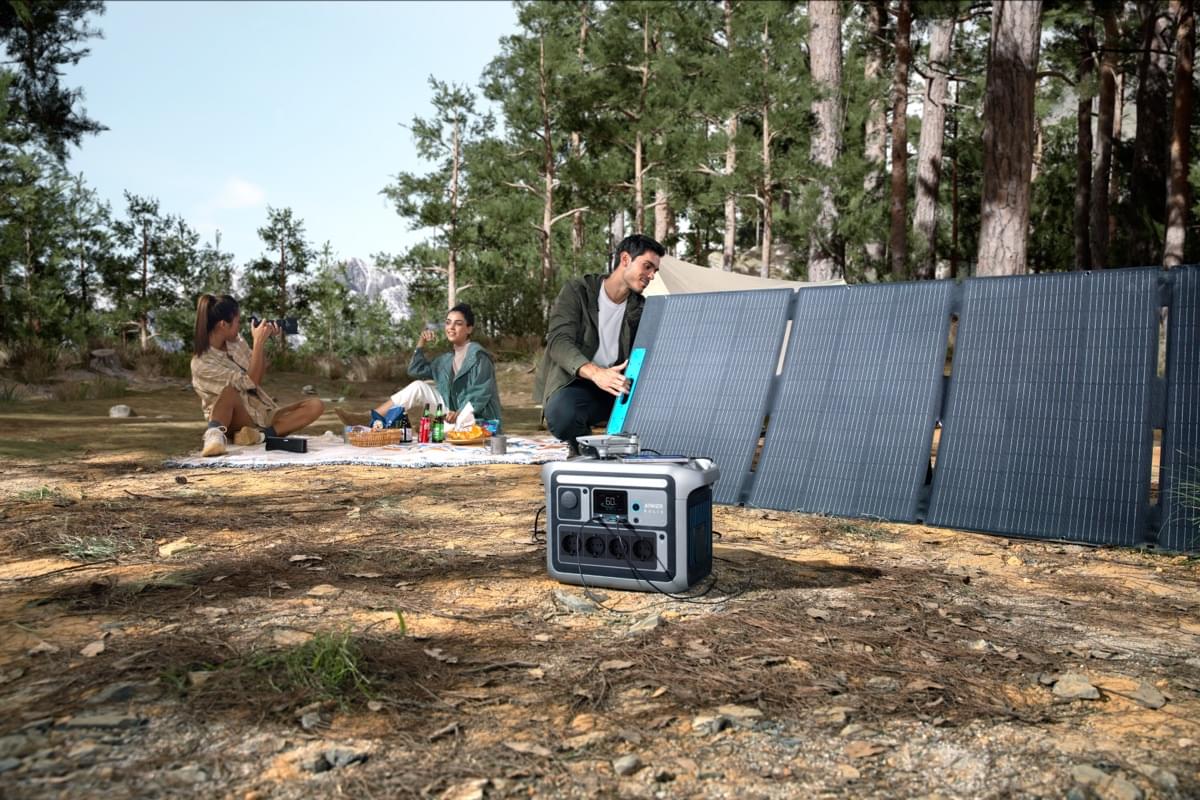Going off-grid with the
Anker SOLIX C1000 portable power station opens up a world of possibilities, from powering a remote campsite to ensuring you have backup during an outage. But to truly be self-sufficient, you need to master its solar charging capabilities. Many users don't realize they can achieve incredibly fast charging speeds by harnessing the sun. In this comprehensive guide, your trusted experts at
TeqClub will walk you through everything you need to know to maximize the C1000’s powerful 600W solar input and keep your devices running, no matter where you are.
1. Understanding the 600W Solar Input
The
Anker SOLIX C1000 isn't just another power station; it's a high-performance energy hub. One of its standout features is the ability to accept up to
600W of solar power. This is a significant amount for a station of this size and is the key to rapid off-grid recharging. This is all managed by an internal MPPT (Maximum Power Point Tracking) controller, a smart piece of tech that constantly optimizes the voltage and current from your solar panels to ensure you're getting the most efficient charge possible, even as lighting conditions change. Hitting this 600W cap means you can recharge your C1000 from 0 to 100% in as little as 2 hours under ideal conditions.
2. Reaching Maximum Power: Connecting Multiple Panels
A single solar panel typically won't be enough to reach the 600W limit. To achieve this, you'll need to connect multiple panels together. The
Anker SOLIX C1000 is designed to handle this, but it's crucial to connect them correctly—usually in parallel. A parallel connection sums up the wattage (and amperage) of your panels while keeping the voltage the same. This is important because you must stay within the C1000's acceptable voltage range (typically 11-60V) to avoid damage. For example, you could connect three 200W panels or two 300W panels in parallel to get a combined 600W output, feeding maximum power into your station. Always check your panels' specifications before connecting them.
3. Anker vs. Third-Party Solar Panels: What's Best?
You have options when it comes to choosing solar panels for your
Anker SOLIX C1000. Should you stick with Anker's own panels or explore third-party options? Here’s a quick breakdown:
-
Anker Solar Panels: The biggest advantage here is guaranteed compatibility. They are designed to work seamlessly with the C1000, offering a true plug-and-play experience. The build quality and efficiency are typically very high, ensuring you get a reliable system.
-
Third-Party Panels: The primary benefit is choice. You can find panels in various sizes, wattages, and price points. Thanks to the C1000's universal XT-60 solar input port, connecting them is straightforward, though you may need a simple adapter. The key is to ensure the third-party panel's voltage (specifically the 'Voc' or Open-Circuit Voltage) does not exceed the C1000's maximum input voltage.
Ultimately, both are great options. If you value simplicity and guaranteed performance, stick with Anker. If you're on a budget or have specific size requirements, third-party panels are a fantastic alternative.
4. Estimated Solar Charging Times ⏱️
So, how quickly can you expect to charge your
Anker SOLIX C1000? The table below gives you an idea based on the total wattage of your solar array in ideal sunny conditions. Real-world times may vary based on weather, panel angle, and time of day.
| Solar Array Power | Estimated Time to 100% Charge |
| 200W | ~6.5 Hours |
| 400W | ~3.2 Hours |
| 600W (Max Input) | ~2.1 Hours |
5. Pro Tip: Positioning for Peak Performance ☀️
Getting the most out of your solar panels isn't just about their wattage; it's about their position. For peak performance, your panels should be directly facing the sun, perpendicular to its rays. Since the sun moves across the sky throughout the day, you'll get the best results by adjusting your panels' angle every couple of hours. As a rule of thumb, start the morning with them facing east, point them more upwards at midday, and angle them towards the west in the afternoon. Also, ensure your panels are clean and free from shade cast by trees or your vehicle. A little bit of management can make a huge difference in your daily power generation.
Conclusion: Unleash Your C1000's Full Potential
By understanding how to combine panels, choosing the right ones for your needs, and positioning them for maximum sun exposure, you can transform your
Anker SOLIX C1000 into a fast-charging, off-grid powerhouse. Harnessing its full 600W solar input capability gives you the freedom and peace of mind to power your adventures and essentials, all with clean, renewable energy. The C1000 is more than just a battery; it's your ticket to energy independence.
Ready to unlock unlimited power? Find the perfect solar setup for your
Anker SOLIX C1000 at
TeqClub today! If you have any questions about creating your ideal solar array, drop a comment below, and don't forget to share this guide with fellow adventurers.

